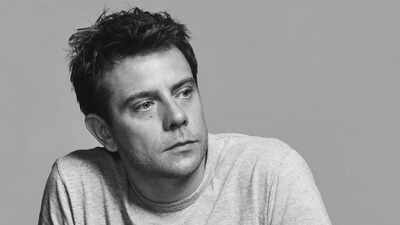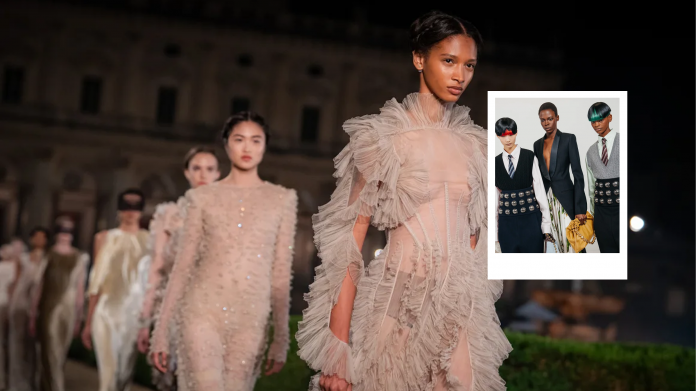After months of speculation and cryptic Instagram posts, the fashion world’s worst-kept secret is now official. Jonathan Anderson, the boundary-pushing Northern Irish designer known for reviving Loewe and embracing the surreal, has been named the new creative director of Dior. His appointment signals not only a shift in direction for one of fashion’s most iconic houses, but potentially a much-needed reset for the luxury industry at large.
A sunset, and a new beginning
It all began with a shadow. In December 2024, Jonathan Anderson posted an image on Instagram — a silhouette cast across a quiet beach at sunset. With only the word “sunset” in the caption, the post seemed innocuous. But in fashion, where silence speaks volumes and timing is everything, the image ignited speculation. Was Anderson hinting at the end of one chapter and the beginning of another?
The answer came into focus on June 2, 2025. Dior officially announced Anderson as its new creative director, a role that will see him take charge of womenswear, menswear, and haute couture — an unprecedented consolidation of power at the storied French house. In a statement, Anderson called the role “a great honor,” emphasizing his admiration for Dior’s heritage and its legendary ateliers.

The appointment marks the latest move in a dramatic reshuffling across luxury fashion, but few changes carry the cultural weight of Dior. Founded in 1946, the brand helped shape the post-war fashion landscape with its “New Look,” and now, nearly 80 years later, it’s counting on Anderson to reimagine what that legacy can mean in a radically different world.
The Dior dilemma
While Dior continues to command global recognition, the brand has struggled to maintain the kind of innovation and cultural dominance expected from an LVMH crown jewel. Analysts have described it as the group’s “problem child,” pointing to creative stagnation and sluggish momentum in an increasingly competitive market. The departure of Maria Grazia Chiuri from womenswear in May and Kim Jones from menswear earlier in the year left Dior at a creative crossroads.
Enter Jonathan Anderson, whose decade-long tenure at Loewe proved his ability to turn a quiet label into one of the most talked-about brands in fashion. From surrealist accessories to avant-garde silhouettes, Anderson brought Loewe back to life with a blend of irreverence and craftsmanship that captured the imagination of both insiders and consumers.
His challenge at Dior will be to strike a balance between reverence and reinvention — to honor the brand’s foundational codes while breathing new energy into its offerings. “I am convinced that he will bring a creative and modern vision to our House,” said Delphine Arnault, CEO of Christian Dior Couture. Her father, Bernard Arnault, chairman and CEO of LVMH, added: “Jonathan Anderson is one of the greatest creative talents of his generation.”
The surrealist behind Loewe’s reinvention
At 40, Anderson is no stranger to the pressures of the fashion spotlight. When he took over at Loewe in 2013, the Spanish leather goods label was largely an afterthought in the LVMH portfolio. Under his direction, it became a design powerhouse, thanks to a daring mix of humor, art, and architectural tailoring.
Anderson’s designs at Loewe weren’t just fashion statements — they were cultural artifacts. A handbag shaped like a pigeon? A pair of heels topped with rose stems or cracked eggs? These pieces walked the line between the ridiculous and the sublime. Yet beneath the eccentric surface was an undeniable sense of mastery — an understanding of fabric, form, and context that won him fans across the industry.
Beyond the runway, Anderson expanded Loewe’s cultural footprint through initiatives like the Loewe Foundation Craft Prize and memorable campaigns featuring everyone from Daniel Craig to Dame Maggie Smith. In 2024, he further merged fashion and cinema, designing costumes for Luca Guadagnino’s films Queer and Challengers — signaling a designer who understands the power of storytelling across mediums.
A new chapter for Dior, and for fashion
Anderson’s arrival at Dior is more than a high-profile hire. It’s a signal that fashion’s next era may be driven less by tradition and more by risk — by a willingness to mix past and present, the refined with the absurd, couture with concept.
He joins a wave of generational shifts happening across the luxury industry. In recent months alone, Pierpaolo Piccioli was appointed at Balenciaga, Demna moved to Gucci, and creative reshufflings took place at Chanel, Versace, Celine, and beyond. The message is clear: the old playbook no longer applies, and houses are looking for disruptors to lead them forward.
Anderson’s philosophy, famously articulated in a 2024 commencement speech, reflects that ethos: “Authenticity is invaluable; originality is non-existent. Steal, adapt, borrow… If you do this, your work will be authentic.” The quote — itself a remix of Jarmusch, Godard, and Picasso — is emblematic of Anderson’s creative approach. He’s not interested in purity or perfection. He’s interested in movement — in taking ideas somewhere new.
Dior’s future, through Anderson’s lens
What might Anderson’s Dior look like? While it’s too early to predict specific collections, we can anticipate a departure from the restrained femininity of Chiuri and the tailored utility of Jones. Expect intellectual play, theatricality, perhaps even absurdity — all grounded by the technical prowess of Dior’s ateliers.
If Anderson can channel the same eccentric energy that turned Loewe into a cultural touchpoint — and if he’s granted the freedom to fully reshape Dior’s narrative — we may be on the cusp of one of the most exciting reinventions the house has seen since its founding.
More than a designer, Anderson is a storyteller. And Dior, with its complex history and cultural weight, offers an unmatched platform for a new kind of story — one that blends craft with irony, heritage with play, and haute couture with subversion. Fashion’s worst-kept secret is out. Now comes the surprise.










